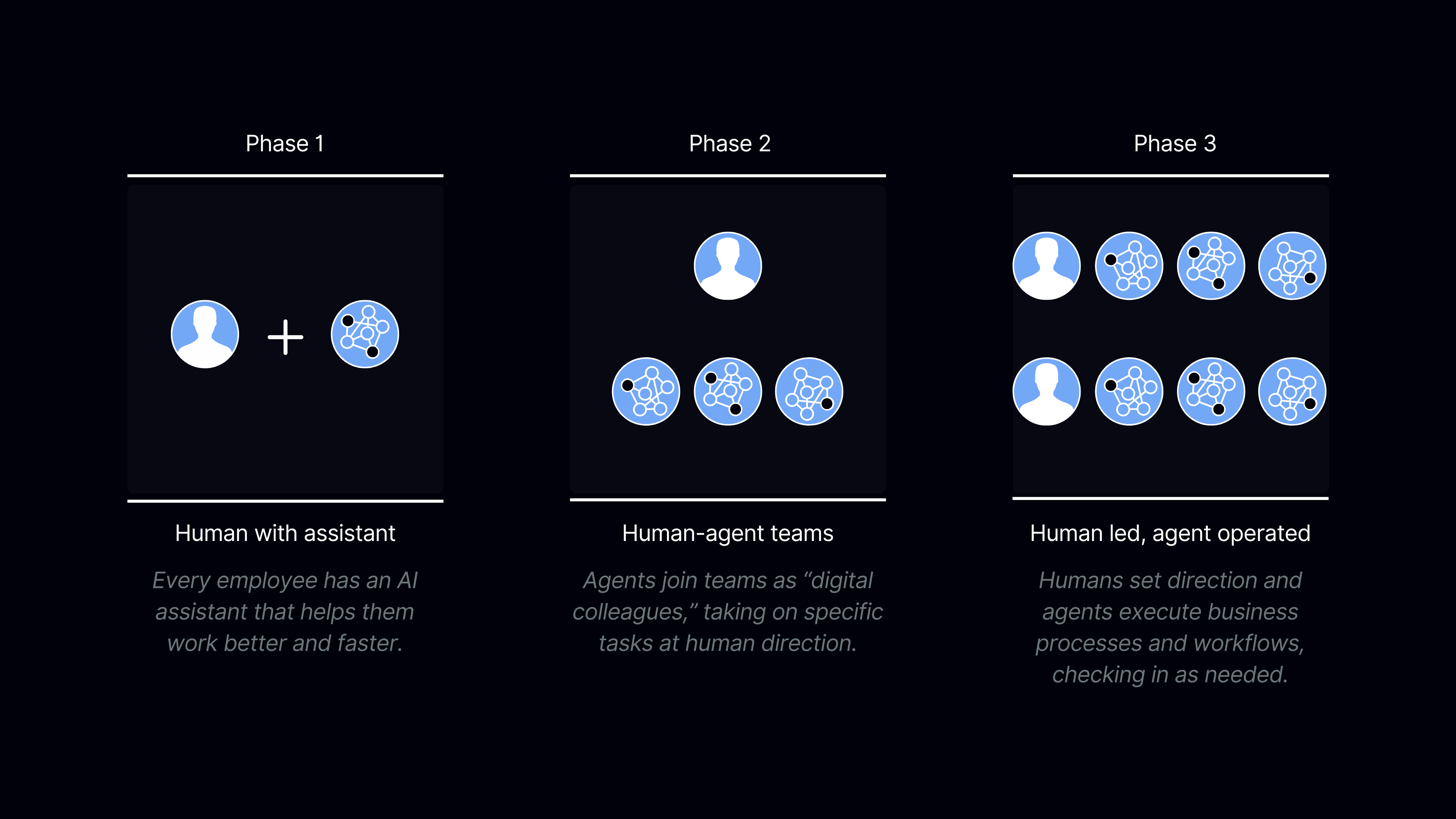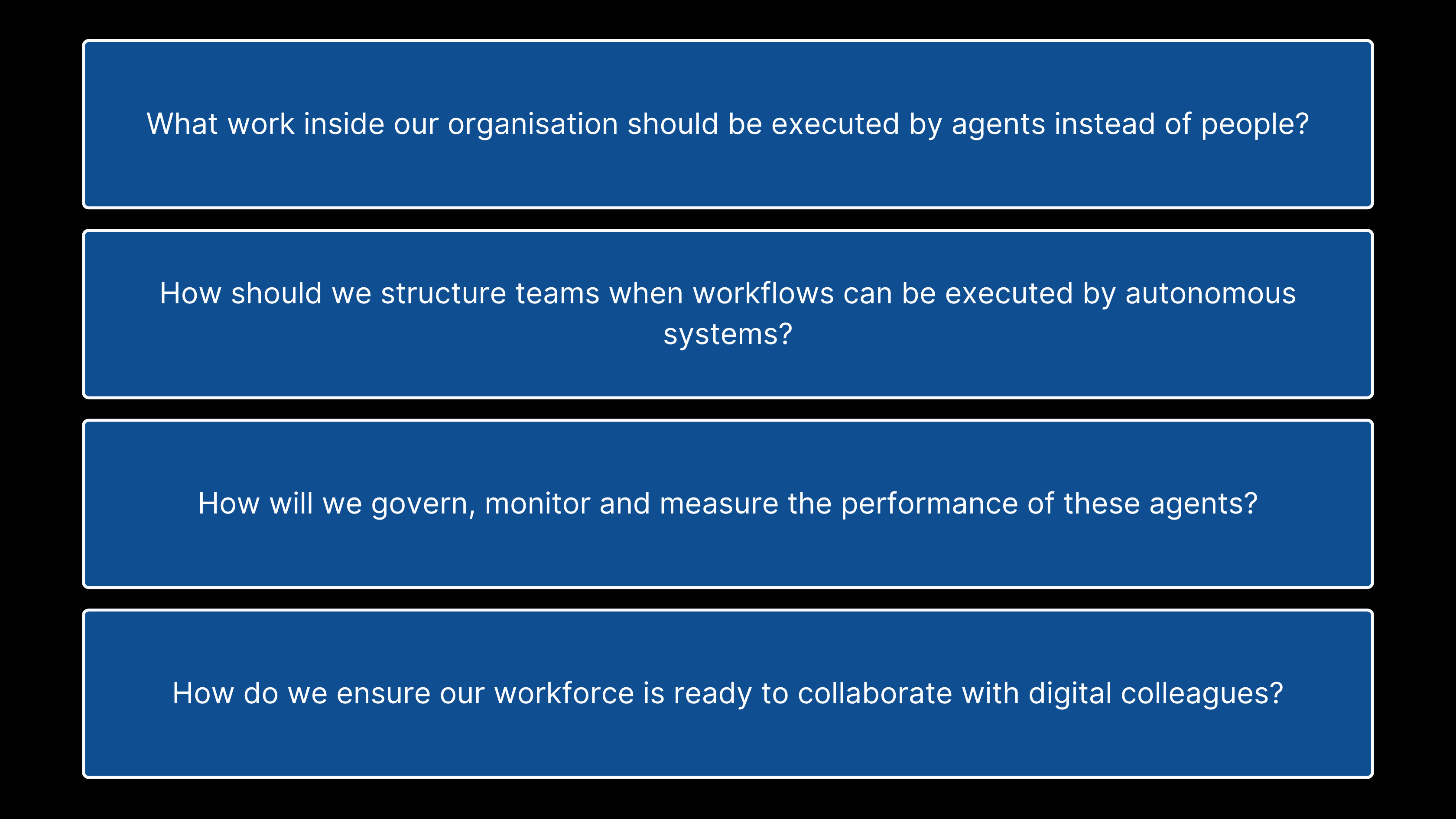
From Per-User to Per-Agent: Microsoft’s New Pricing for the AI Era

.png)


.png)
When Satya Nadella speaks, the technology industry tends to listen. But his latest remarks should do more than capture attention, they should prompt a fundamental strategic rethink inside every professional services firm, consultancy and enterprise with ambitions of staying competitive in an AI-accelerated economy.
During a recent appearance, the Microsoft CEO explained that the company’s long-established “per-user” licensing model, one of the most durable business structures in the software industry, is giving way to something far more transformative: pricing and value models built around AI agents rather than human seats. It is a subtle phrase with enormous consequences. In Nadella’s framing, “the way to think about the per-user business is not just per-user, it’s per-agent.”

For the first time in decades, software is no longer being priced solely for human operators. It is being priced, and eventually built, around autonomous agents that think, reason and act on behalf of organisations. For businesses navigating the future of work, the shift is nothing short of historic.
Microsoft’s evolving strategy recognises what AI consultancies and forward-thinking enterprises have begun to see clearly: the future workplace is not a digital campus for humans, but a shared environment where human experts work alongside fleets of AI agents. These agents store information, make decisions, carry out tasks, coordinate workflows and deliver outcomes at a speed and scale humans simply cannot match.
This shift is already reshaping enterprise architecture. Nadella notes that everything Microsoft built beneath M365, from identity layers to data fabric, remains relevant because “even if you’re an AI agent, you need somewhere to store your data.” The infrastructure once designed for people is becoming the infrastructure for digital colleagues. This is the real meaning behind the “per-agent” era: enterprises will soon measure productivity not by the number of employees using software, but by the number of AI agents successfully deployed and the outcomes they deliver.
As an AI consultancy working directly with organisations in Europe and the Middle East, Digital Bricks sees the implications clearly. Professional services firms: consultancies, advisory practices, legal teams, accountancies, have historically operated within rigid cost structures. Human hours, human expertise, human throughput. But the emergence of agentic AI changes the equation. When a well-designed AI agent can draft documents, analyse cases, review contracts, prepare financial models or even coordinate entire workflows, value creation is no longer constrained by the availability of people.
.png)
For firms that embrace agentic AI, the opportunity is radical: shift from a labour-bound industry into an outcome-driven one. AI agents redefine capacity. They expand client service windows. They accelerate delivery cycles. They create leverage without increasing headcount. And, crucially, they embed institutional intelligence inside software, repeating it consistently and without fatigue.
The firms that adopt this model will outpace the ones that merely “use AI” as a bolt-on feature.
The agentic era requires more than building a few prompts or automating tasks. AI agents need identities, access layers, audit trails, training protocols, data governance, monitoring environments and lifecycle management. They need to collaborate with other agents and with people. They need to comply with regulations, including the EU AI Act, which is reshaping governance globally.
This is where the future competitive edge lies. AI consultancies capable of designing full agent ecosystems—not just point-solutions—will become indispensable. And businesses that build their agent architecture now will enjoy early-mover advantage: compound productivity, lower operational friction, and richer data signals that reinforce strategic decision-making.
What Microsoft is signalling is not simply a licensing change. It is an infrastructural one. Digital Bricks has positioned itself at the centre of this transition. As a Microsoft-aligned AI consultancy specialising in agentic AI development, we help organisations move from theoretical AI conversations to practical, enterprise-grade implementation.
Our work in professional services, commercial real estate, insurance, education and public-sector innovation reveals the same pattern across industries: businesses know AI is important, but few have a strategy for operating fleets of AI agents. Even fewer know how to design agents that genuinely improve business performance rather than simply automate tasks at the edges.
What differentiates Digital Bricks is our insistence on building agents sheathed in governance, identity, workflow logic and measurable ROI. We do not deliver generic chatbots. We design agentic systems—digital colleagues that understand context, integrate deeply into existing tools, and execute work that previously belonged to analysts, coordinators or junior staff.
This is the true value of agent-first transformation: you are not replacing people; you are multiplying them.
The shift to per-agent thinking is not, at its core, a technical story. It is an organisational leadership moment. Executives must now ask:

These are not questions answered by software alone. They require guidance, education, strategy and architectural clarity, areas where AI consultancies like Digital Bricks provide the greatest value.
Nadella’s message is a quiet warning wrapped in optimism. The software world is rearranging itself around agents. Productivity models will follow. Pricing will follow. Organisational structures will follow. The businesses that treat AI agents as experimental side projects will miss the moment. The ones that build robust agent ecosystems—inside their departments, inside their workflows, inside their business models, will lead their industries.
Professional services firms, in particular, stand at the threshold of a historic transformation. Those who embrace agentic AI early will redefine speed, accuracy, capacity and scalability. Those who delay will face competitors that can deliver the same work at a fraction of the time and cost.
Agentic AI is not a trend. It is the next operating system of the enterprise. Microsoft has made that clear. The rest is a leadership decision. And for organisations ready to make that shift, Digital Bricks is the partner that helps turn strategy into structure, and structure into results.